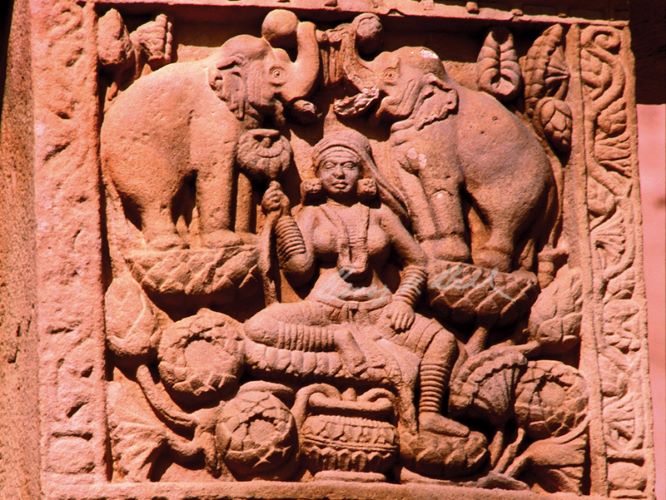IHC presents pioneering talk on birth of deities in Indian art

Deity of Abundance Gajalakshmi. Pic: Benoy K Behl
Benoy K Behl
About 3,500 years ago, deities were created in Vedic Indian thought. These embodied the world of nature around us and provided us a deep connection to the forces which control our existence.
The later deities of the Upanishadic period and the Puranas are the personifications of concepts and qualities. These qualities are potentially within us and by looking upon the deities brought to us in art, by meditating upon these, we awaken those fine qualities. When we are filled by those qualities, we have become that deity. Thus, the potential of Enlightenment that we have, is personified in the Buddha and the aim of Buddhists is to one day achieve Buddhahood themselves. Similarly, Jainas would pursue the goal of achieving victory over the ignorance of the Truth, to become a Jina (Victor).
Stupas are amongst the earliest Indian monuments which survive both of the Buddhist and Jaina traditions. Recent excavations near Nalanda have also unearthed a large mud stupa made between the eighth and the tenth centuries BCE.
In Indic thought, the final truth which is sought is formless, arupa or nirguna. The concept of the stupa (of Buddhist, Jaina and Ajivika worship) and the linga (or ‘symbol’ of the Hindu tradition) is explained in the Vishnudharmottara. It is mentioned in this treatise that, ‘The best way in which the eternal is to be imagined is without form. For seeing the true world, eyes are to be closed in meditation.’ (Translation by Dr. Stella Kramrisch.) Thus, stupas could be meditated upon, without reminding the devotee of any forms of the illusory world.
The great Borobudur stupa of the eighth-ninth century CE in Indonesia clearly illustrates the purpose of the stupa in Buddhist thought. The stupa has relief made around it, which one sees as one goes around it at various levels. Finally, we go upward to the top level of the stupa, through the gateway of Kala, or Time. Leaving behind time itself, we approach the final truth, the arupadhatu, that which is without form. Here, at the final point of the ascent, it is the stupa itself which is before us.
At the gateways of the railings of the early Stupas of the 2nd century BC at Sanchi and Bharhut, we see early deities of Indian art. These are yakshas and yakshis, personifications of the fruitfulness and wealth of nature. The name comes from the root of ‘yagnya’ and they mark our respect and acknowledgement of the natural order.
The first deity of Indic art with a fully formalised iconography is Gajalakshmi, Lakshmi being bathed by elephants who pour water upon her. As with earlier yakshis, Lakshmi is a deity of prosperity and abundance of the natural order. She is made on the vedika of the Sanchi and Bharhut stupas.
A great tradition began with the earliest-surviving Buddhist stupa railings of the 2nd century BCE, at Bharhut and Sanchi in India. It is a tradition which continues till today, even as far away as in the temples of Japan. While the focus of our meditation lies deep within the railings of the stupa (or inside the temple), the outer sections of the edifice reverentially present the natural forces and the abundant fertility of the world around us.
Know about all this and more at the illustrated talk on
Birth of Deities in Indian Art by the author on May 21, 6pm.
To join click: https://us06web.zoom.us/j/85485885872?pwd=SklnNFBrc28zYkhvaHlJcGgwVCtwdz09


